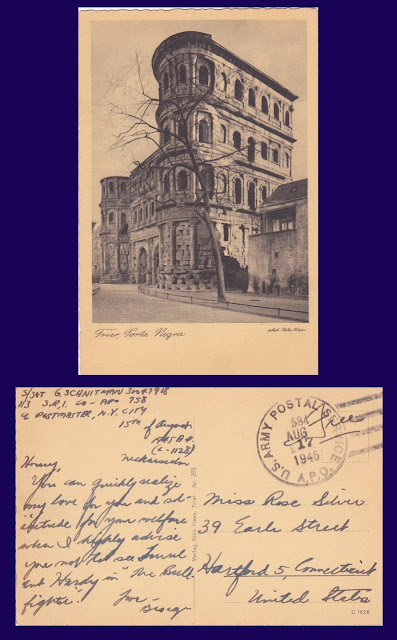As 2013 comes to a close I reflect on two men who died in the service of our country on New Year's Eve -- Bill Dail of Knoxville, Tennessee, who died in Vietnam; and Woodrow Hoffer of Monroe, Michigan, killed in action in World War II.
Marine PFC Willie Fred Dail, Jr. was killed by small arms fire in Vietnam on Dec. 31, 1967. He was barely 19. I didn't know PFC Dail, but we both attended Fulton High School. He was in the Class of '66, two years ahead of me. Looking back I find it unsettling to realize how oblivious I was at that time to the war in Vietnam. On that New Year's Eve I was probably looking forward to a date that night and eagerly awaiting the resumption of basketball season after the holidays. It would never have crossed my mind that a boy who walked the halls with me less than two years earlier had lost his life half a world away.
A year later my attention was focused on Vietnam when my big brother, Joe, went there as an artillery officer. Fortunately he came home safe and sound.
 |
| PFC Dail |
A year later my attention was focused on Vietnam when my big brother, Joe, went there as an artillery officer. Fortunately he came home safe and sound.
PFC Woodrow
Hoffer was killed in action in the Pacific on New Year’s Eve 1944. Eight weeks
later on Feb. 27, 1945 his younger brother, Staff Sergeant Marion E. Hoffer, was
killed in action in Europe.
I
discovered the story of the Hoffer brothers through a postcard Woodrow wrote to
a relative during the war. A chapter about them and their family is included in
my book, Postcard Memories from World War II: Finding Lost Keepsakes 70 Years
Later.
Becky
and I had the honor of visiting with relatives of Woodrow and Marion last year.
We were struck by how their family, and the entire Monroe community, still
honors the memory of these brothers, and all others from Monroe who died in the
service of our country.
Woodrow
and Marion are buried overseas in cemeteries maintained by the American Battle
Monuments Commission. Woodrow’s final
resting place is at the Manila American Cemetery in the Philippines, and
Marion’s grave is in the Netherlands American Cemetery in Margraten,
Netherlands.
Back
home, their names are inscribed on granite benches placed by the family at a
local cemetery, and they are also listed on a World War II memorial in a Monroe
park.
As
I learned about the Hoffer brothers, I couldn’t help but think about their
mother, Mary Derickson Hoffer. When she observed Christmas in 1944 she
had three sons in the service – Woodrow, Marion, and Bill. A fourth son, Melvin, was safe at home. In
the next several weeks both Woodrow and Marion were killed in action, and
Melvin enlisted after learning of his brothers’ deaths.
Ed
Hoffer, nephew of Woodrow and Marion, speaks fondly of his grandmother and her
strength: “She had two gold stars and two blue stars on her door. I can’t fathom her sitting in that house,
wondering every It didn’t hit home for me until I
saw ‘Saving Private Ryan.’ How did she live day to day with that
pressure?” (A blue star on the door
denoted a son in the service, while a gold star meant a son had been killed in
action.)time a car turned around in the driveway if it was Western
Union.
Ed’s
sister, Norma Stahl, remembers their grandmother’s strength despite having lost
two sons and a nephew in the war, and a third son, Norma’s father, in a traffic
accident. Norma wrote: “Grandma lived to be 100 and passed in
1992. Her beauty, strength, sense of
humor, and kindness to others, after suffering so much loss, has always been
such an inspiration to me.”
When you toast the New Year, pause to reflect on the Dails and the Hoffers, and all the other families who gave so much to preserve our freedoms.














